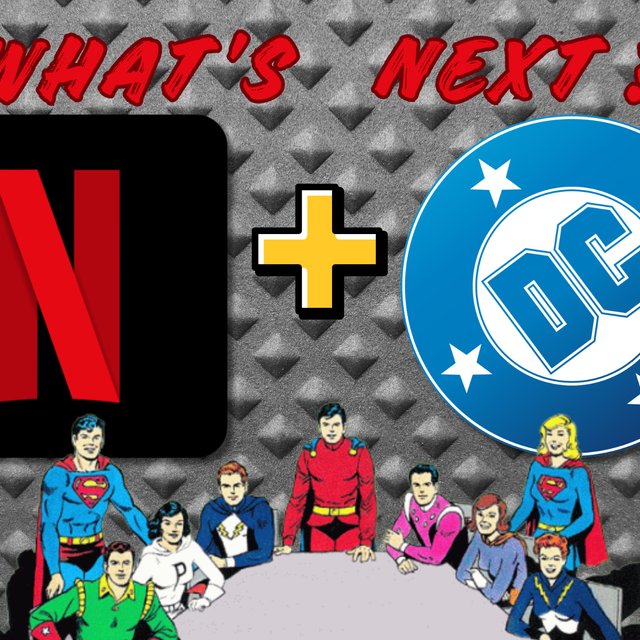
The concept of a ‘multiverse’ is something comic books love, and use to either tell complex stories or explain away inconsistencies in a given character’s history. The latest ‘Spider-man’ trailer, that was dropped the other day, made many people take notice of the direct references to a multiverse. What is the role of this concept in Marvel comics and how might it effect speculation?
Unlike some other genres, comic book super-hero story telling can get quite convoluted. Explicit use of a multiverse became commonplace in the Silver Age, when the number of super-hero characters and the interactive world created for their adventures began to expand to also include their Golden Age history.
The most famous use of the multiverse was in DC titles where it goes back to the early 1950s. The first ever use of a ‘twin-earth’ story line as central to a plot, for example, was probably Wonder Woman #59 (May 1953). There Diana meets a parallel version of herself who tells her that she comes from “a twin world, existing simultaneously alongside it! But developing differently!” (see here).
The Marvel multiverse, by contrast, although it can be just as perplexing to casual readers, is just as central for explaining a universe of super-beings. Moreover, the multiverse concept in Marvel is even older than its DC counter-part!

Of course here we have to qualify the above claim, since everybody knows ‘Marvel’ as a brand didn’t exist before 1961. How can the Marvel multiverse be older than the Fantastic Four?
Well, the predecessor to Timely comics- which became Marvel’s predecessor- was known as ‘First Funnies Inc.’ In 1938, Funnies Inc. published a promotional magazine distributed at movie theaters called Motion Picture Funnies Weekly #1. Besides introducing Bill Everett’s Namor: The Sub-Mariner, MPFW #1 is also the first official appearance of the main-stream Marvel Universe, later known as Earth-616.
Confused yet? Don’t be. What this means is that the world where Namor’s adventures take place is an Earth like ours but with noticeable differences such as the existence of Mutants and magic and super-heroes with powers. This is the Marvel comic book universe.

Strange Tales #138 (November 1965) – First appearance of Eternity
In the MCU the existence of a multiverse was first teased big-time in the ‘Doctor Strange’ film. First implicit mention of the multiverse in Marvel’s Doctor Strange comic adventures however, may go back to 1965. In Strange Tales #138, Stephen Strange meets the embodiment of Eternity. Eternity’s very existence is tied into the origins of the Marvel Universe. A celestial being of immense power, Eternity is the anthropomorphic manifestation of a singular reality in the multiverse. If the Marvel movies are really going to go ahead with the 'multiverse' concept for Phase Four- keep your eye on this book since Eternity could eventually make an MCU appearance. Currently ST #138 has a FMV of around $500.00 in graded 9.2 condition. Higher grades could really spike if Eternity shows up.

The Daredevils #7 (July 1983) – First explicit mention of Earth-616
Finally, Earth-616 -which as mentioned is the Marvel comics Universe -is first explicitly named in a Captain Britain story written by Alan Moore and Alan Davis. This story “Rough Justice", was first published in the anthology comic The Daredevils #7 by Marvel UK. In the story, Brian Braddock learns that he is the Captain Britain of Earth-616, part of a Captain Britain Corps existing in a multiverse. Merlin also states that in the multiverse multiple-Earths exist, each with their own British Isles.
In a Universe with cosmic and super-powered beings, however, the very fabric of reality can be manipulated. This can happen, for example, when characters time travel. As we saw in ‘Endgame,’ the Marvel mechanics of temporal reality are not the same as those found in Scott Lang’s favorite Hollywood movies such as ‘Back to the Future’.
When a significantly powerful character, or group of characters, undertakes time-travel, a tangent reality can be created. The parallel world automatically assumes its own development and history, effectively permitting it to shape a reality that takes place in a hierarchy of worlds or universes.
One more thing, if the mainline Marvel Universe of the Comics is Earth-616, and the MCU movies have changed or altered the mainline Marvel Universe (no X-men, no Fantastic Four--yet), then obviously the MCU universe is not the mainstream comic Universe. This is, in fact, the case. The MCU has been referred to as Earth-199999 by die-hard fans. But remember, a parallel universe is not a fictional or theoretical concept in Marvel stories. Another universe is a parallel existing reality. That means that all the logic and characters of the world of the Marvel comic universe exists for the MCU, just in a slightly different form.



